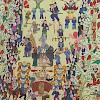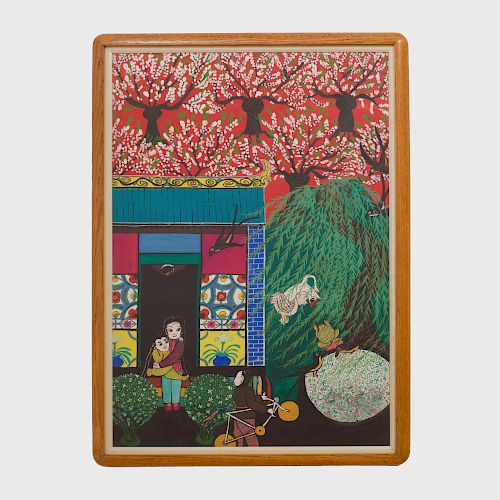Chinese School (20th Century): A Spring Day
Bid Increments
| Price | Bid Increment |
|---|---|
| $0 | $25 |
| $200 | $50 |
| $500 | $100 |
| $3,000 | $250 |
| $5,000 | $500 |
| $10,000 | $1,000 |
| $30,000 | $2,500 |
| $100,000 | $5,000 |
Gouache on paper, 1982, signed and dated on the reverse.
34 x 24 in. (sheet), 37 x 27 in. (frame).
Note: Huxian is a small village in the northeast of Xi’an, the capital city of the Chinese province of Shaanxi. As in most rural villages in China, Huxian has a long and rich heritage of folk art dating back to Xi’an’s history as the capital of the Tang Dynasty (618-907AD). In the 1950s, as part of the People’s Republic initiatives, painters and professors at the Central Academy of Fine Arts visited country villages throughout China to teach peasants how to paint. The people of Huxian received their teachers warmly and within a decade had developed their own bold and colorful style of Peasant Painting that became famous throughout China and spread internationally.
Unlike traditional Chinese painting, the Huxian painters depicted scenes from their daily existence, its labors and the pleasure they derived from their simple lives. Their work is naïve, primitive and folk in subject matter and style. The Huxian style was born from the tradition of Chinese painting combined with the ideals of the Chinese Revolution and the People’s Republic. The result is art that is clearly Chinese and socially conscious for its time, conveying the political idea that collective labor results in the most fruitful living conditions for peasants. In the late 1960s, the Huxian peasant paintings were published in Chinese and other languages, helping to build awareness for their work and establish a viable market domestically and abroad.





